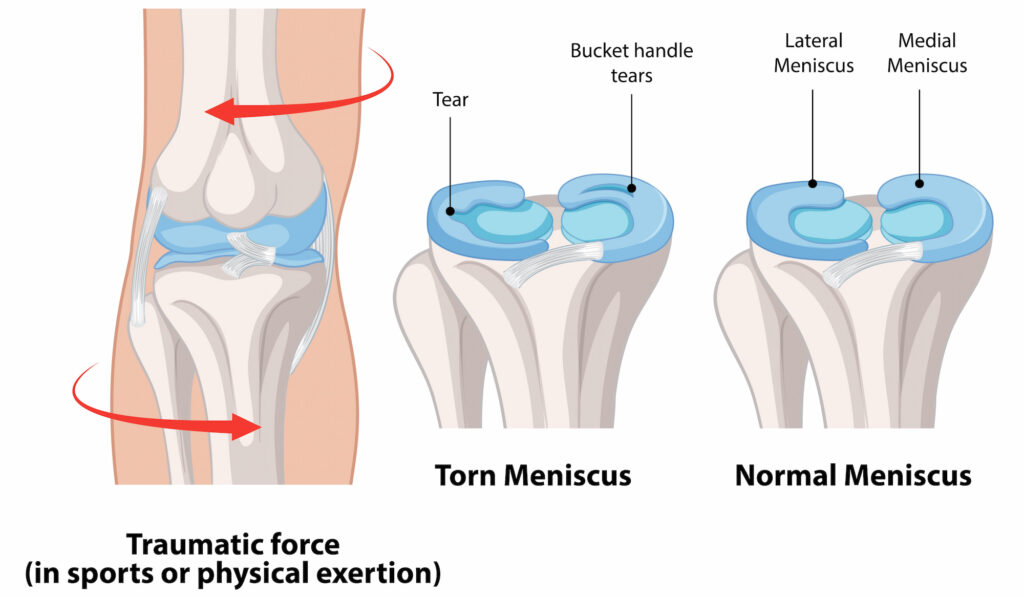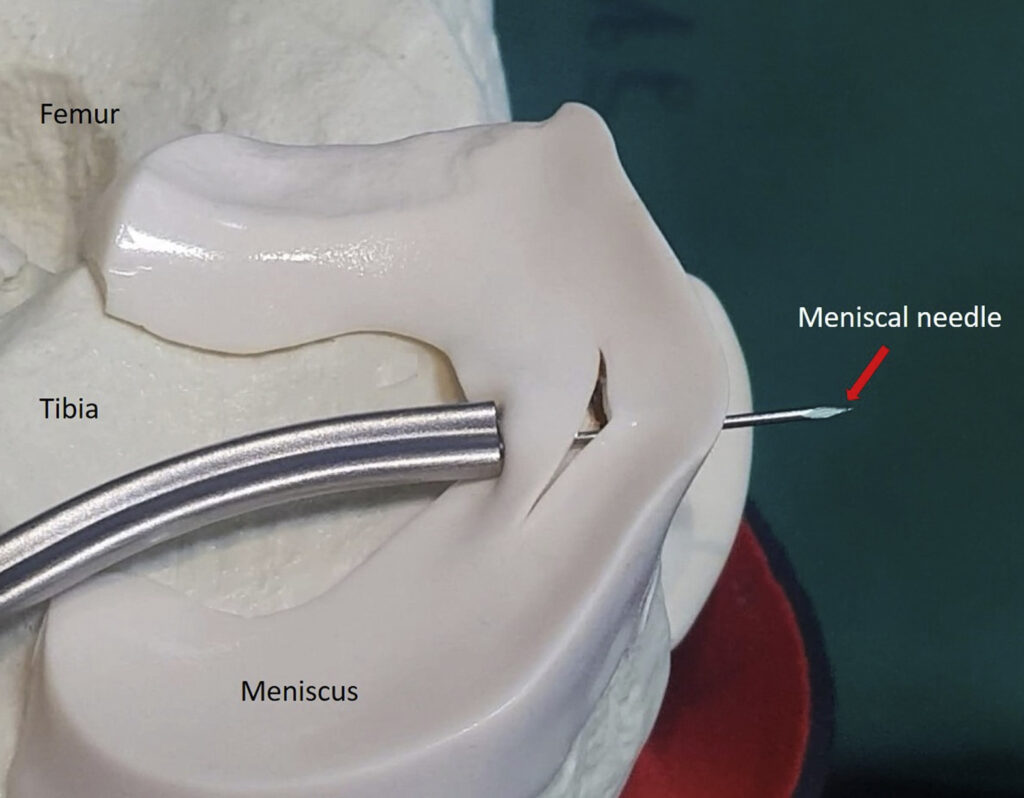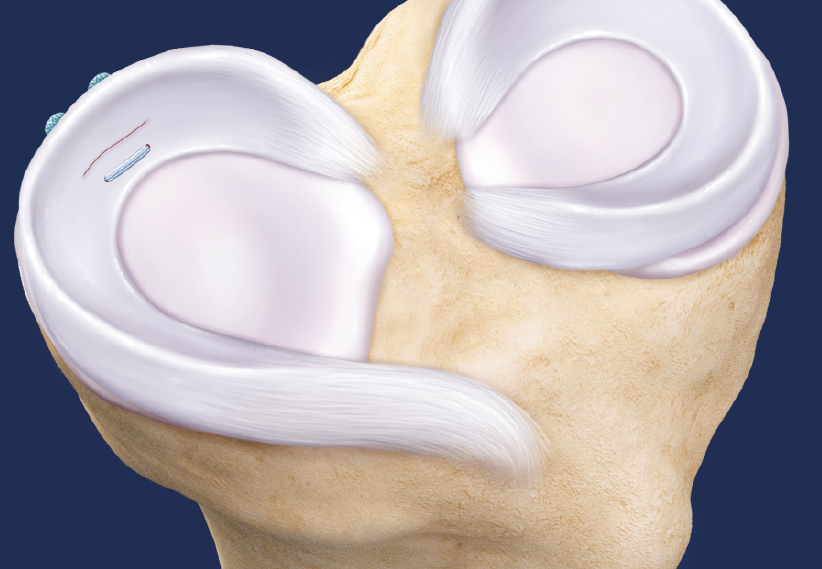Meniscus surgery is often considered when symptoms persist despite non-surgical treatments like rest, physiotherapy, and anti-inflammatory measures. It’s typically recommended for:
- Large, displaced tears causing mechanical symptoms such as locking or instability.
- Younger patients with acute tears that have a good blood supply and potential for healing.
- Those experiencing ongoing pain, swelling, or mechanical issues after failed conservative management.
It is not recommended for ‘degenerative’ meniscus tears, which are the result of general wear and tear, as large research studies have not shown this to improve long term outcomes. Read more about meniscal tears below:

What the surgery involves
Meniscus surgery is usually a minimally invasive day procedure. The surgical approach depends on the type of tear. During the procedure, small incisions allow access to the knee joint. Dr Lambers will assess the meniscus, trim or repair the tear as needed, and ensure stability before completing the surgery:
- Meniscal Debridement: Non-repairable tears, such as frayed or loose pieces without blood supply, are trimmed to restore joint function and reduce symptoms
- Meniscal Repair: Repairs are more successful in younger individuals with recent, localised tears in areas with adequate blood supply. Sutures are used to stabilise the tear, and additional techniques may be employed to promote healing.

What to expect after surgery
Post-surgery recovery depends on the type of procedure performed:
- Debridement Patients: May resume daily activities sooner, with reduced pain and swelling in 2-3 weeks
- Repair Patients: Require more restrictive rehabilitation to allow healing, often involving limited motion or the use of a brace for up to six weeks
See the separate rehabilitation protocols for meniscal repair and meniscal debridement below:
Common post-operative instructions include:
- Managing swelling
- Adhering to prescribed physiotherapy exercises
- Gradually resuming activities under medical guidance
How long will you be required in hospital?
Meniscus surgery is performed as a day procedure. Patients return home the same day after recovering from anaesthesia.
Recovery timeline
- Crutches: Used for 1-2 days, then typically phased out as comfort allows
- Sedentary Work: Possible within a week for most patients
- Daily Comfort: Achieved by 2-3 weeks post-surgery
- Specific Restrictions for Repairs: Activities may be limited for six weeks to protect the repaired tissue
Potential risks
- Surgery may increase the risk of clots forming in the legs or lungs
- Internal bleeding is a possible complication post-surgery
- Though rare, infections can occur at the surgical site or within the joint
- There’s a small risk of injury to nerves or vessels near the knee
- Post-operative stiffness may limit joint mobility even after recovery
- A partial meniscectomy can heighten the likelihood of arthritis later in life due to increased joint stress
Is meniscus surgery right for you?
The decision to undergo surgery doesn’t need to be made in haste. Take your time and speak to Dr Lambers to weigh your options and discuss any concerns to determine if meniscus surgery is the right choice for you.

